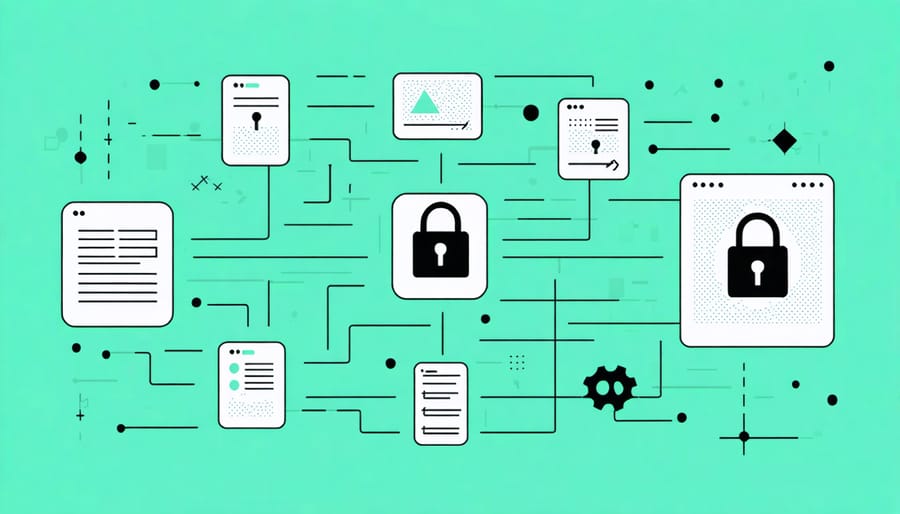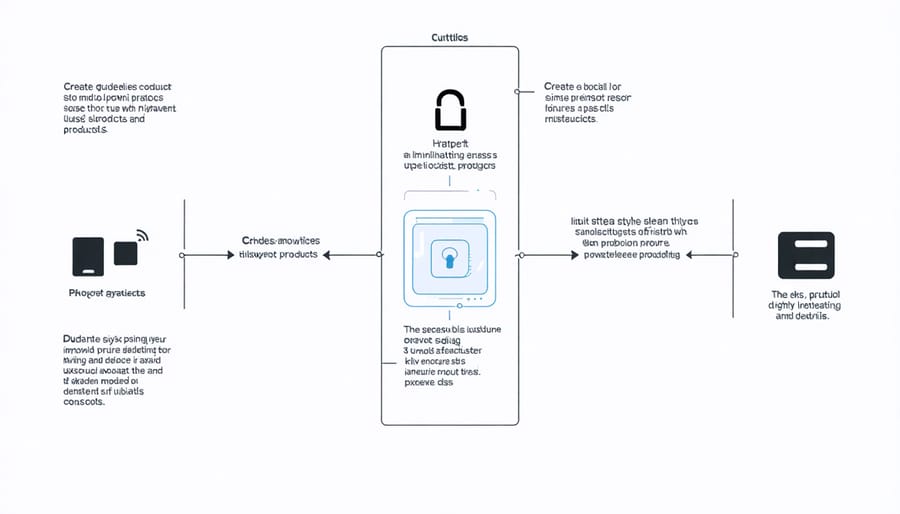1. Assess the cybersecurity measures of all digital products before import by consulting existing vetting processes and industry guidelines, taking inspiration from niche markets such as the Canadian candy store for unique insights.
2. Implement robust encryption protocols to ensure data integrity and protect sensitive information during transit, minimizing potential exposure to cyber threats.
3. Collaborate with cybersecurity experts to perform regular security audits and vulnerability assessments on imported digital products to identify and mitigate potential risks.
4. Stay informed about current cybersecurity policies and international regulations affecting digital imports, ensuring compliance and enhancing cyber safety practices.
Understanding the Risks in Digital Product Imports
Cyber Vulnerabilities in Supply Chains
The digital importation of products, including niche items like freeze-dried candy, hinges on complex supply chains vulnerable to cyber threats. As these supply chains span across continents, they become targets for cybercriminals seeking to exploit gaps in security. A breach within any segment of the supply chain can compromise the integrity of digital products, leading to potential data leaks or malware infiltration. For instance, a vulnerability in the logistics software can allow unauthorized access to sensitive shipment information, which attackers can manipulate to divert or tamper with goods. Additionally, the reliance on third-party vendors introduces risks; if these partners lack robust cybersecurity measures, the digital safety of imports is jeopardized. These vulnerabilities not only endanger the product integrity but also threaten consumer trust and business reputation. To mitigate such risks, companies must implement stringent cybersecurity protocols, conduct regular security audits, and establish transparent communication channels with all partners involved in the supply chain process.

Common Cyber Attacks Targeting Imported Goods
Cyber attacks on imported goods are a growing concern as the global supply chain becomes increasingly digitized. The import sector, including niche markets like freeze-dried candy, is particularly vulnerable in cyberspace to various threats. Common attacks include supply chain intrusions, where cybercriminals target software and systems managing import logistics. This can lead to data breaches that compromise sensitive information related to shipping routes, suppliers, and transaction details. Another prevalent threat is phishing attacks, where adversaries impersonate legitimate entities to extract confidential information from importers or disrupt operations. These types of cyber attacks highlight the critical importance of implementing robust cybersecurity measures throughout the import process. Ensuring firewalls, encryption protocols, and continuous system monitoring are vital steps to safeguard your digital inventory. Staying informed and vigilant is key, as attackers continually evolve their strategies, seeking to exploit any vulnerabilities in the digital interfaces managing the movement of imported goods.
Cyber Safety Measures for Digital Product Imports
Implementing Secure Import Protocols
To implement secure import protocols, businesses must adopt multifaceted strategies that safeguard digital goods during their acquisition and integration. The foundation of a secure import protocol lies in adopting a robust vetting process for suppliers and third-party vendors. Conduct comprehensive background checks to assess the security practices and compliance levels of potential digital product providers. Once a partnership is established, enforce stringent access controls and authentication methods to ensure that only authorized individuals can handle sensitive data related to the imported digital goods.
Another crucial strategy is the implementation of end-to-end encryption throughout the entire import process. This encodes data from point of origin to delivery, ensuring that information remains confidential and tamper-proof. Coupling encryption with continuous monitoring and audit trails enables businesses to detect anomalies early and react promptly to potential breaches. Additionally, fostering a culture of cybersecurity awareness among employees is vital. Providing regular training for your workforce is key to keeping your staff safe online and up to date with evolving threats.
Finally, the integration of automated cybersecurity solutions, such as intrusion detection systems and advanced firewalls, can act as a proactive defense mechanism. By blending these strategies, companies can establish a fortified cyber safety perimeter when importing digital products, effectively mitigating risks while ensuring operational continuity.

Technological Solutions and Tools
In the rapidly evolving landscape of digital product imports, robust cybersecurity technologies and tools are essential to safeguard against emerging threats. Cloud-based security solutions have become indispensable, offering scalable protections like real-time threat detection and automated incident response. Platforms such as Microsoft Azure Security Center and AWS Security Hub provide comprehensive oversight, enabling businesses to monitor digital products entering their networks efficiently.
Additionally, blockchain technology is gaining traction for its ability to enhance transparency and security in supply chains. By utilizing a decentralized ledger, blockchain can help verify the authenticity of digital products and track their journey, reducing the risks related to counterfeit items or malicious modifications.
Encryption remains a cornerstone in cybersecurity strategies. End-to-end encryption ensures that data remains unreadable during transit, effectively preventing unauthorized access. This is particularly crucial when handling sensitive information associated with digital imports. Advanced encryption standards (AES) and secure hash algorithms (SHA) are frequently employed to fortify data integrity.
Intrusion detection systems (IDS) and intrusion prevention systems (IPS) are vital tools for identifying and neutralizing potential threats before they infiltrate a network. These systems analyze incoming traffic for suspicious activities, flagging anomalies for further inspection.
Moreover, security information and event management (SIEM) solutions like Splunk or IBM QRadar compile and assess log data to detect breaches and vulnerabilities promptly.
Finally, fostering public-private partnerships is crucial in developing shared knowledge and collaborative strategies to counter cyber threats in digital product imports effectively. These technologies, coupled with proactive policies, form the backbone of a resilient cybersecurity infrastructure.
The Role of Policy and Regulation
Current Regulations in Place
The landscape of cybersecurity regulations for digital product imports is continuously evolving to address increasing threats. Key regulations emphasize the need for robust security measures, requiring importers to adhere to standards like the General Data Protection Regulation (GDPR) and the Cybersecurity Information Sharing Act (CISA). These regulations mandate strict data protection protocols and real-time information sharing to prevent cyber threats. Importers must implement secure encryption methods and conduct regular risk assessments to comply with these laws. Compliance with such regulations is critical to safeguarding consumer data, particularly when dealing with tech from international markets. Furthermore, partnerships with cybersecurity companies can be instrumental in navigating these regulations effectively. This proactive approach helps ensure digital products meet stringent safety criteria, thereby protecting users and fostering trust in digital products.
Potential Policy Improvements
To enhance cyber safety in digital product imports, policymakers should prioritize transparency and accountability. Implementing stringent regulations that require clear disclosure of a product’s cybersecurity features would empower consumers to make informed decisions. Additionally, establishing a certification process for imported digital products could help ensure they meet minimum security standards before reaching the market. Emphasizing international cooperation is also crucial, as cyber threats often transcend borders. By collaborating with foreign governments and organizations, sharing threat intelligence more effectively can reduce vulnerabilities. Furthermore, creating incentives for companies to adopt best-in-class security practices may spur innovation and drive industry-wide improvements. Lastly, regularly updating these policies to reflect emerging threats and technological advancements can maintain robust defenses against potential cyber threats in this rapidly evolving landscape.

Case Studies: Learning from Past Incidents
Examining past incidents involving cyber threats in digital product imports offers valuable insights into the complexities and vulnerabilities of global supply chains. In one notable case, a major electronics company experienced a breach through counterfeit components imported from an inadequately vetted supplier. Malicious actors embedded malware into these components, compromising product integrity and risking sensitive customer data. This incident highlighted the critical need for rigorous supplier audits and advanced verification technologies to ensure the authenticity of imported digital elements.
Another example involved a cybersecurity lapse in imported IoT devices, where inadequately secured products were exploited to form botnets for large-scale distributed denial-of-service (DDoS) attacks. This serves as a cautionary tale about the importance of implementing robust security protocols and regular software updates to mitigate such vulnerabilities.
The lesson from these cases is clear: thorough scrutiny of the digital product supply chain is essential. Importers must establish stringent security standards and continuously monitor compliance. Additionally, fostering transparent communication channels with suppliers can preempt potential risks and facilitate prompt response to incidents.
Moreover, these examples underscore the necessity for international cooperation in setting and enforcing cybersecurity standards, potentially involving , to safeguard digital product imports. By learning from these incidents, both companies and customers can better navigate the intricate landscape of digital product safety, ensuring that enhanced cyber vigilance becomes an integral part of their operational ethos. Proactively addressing these challenges can not only mitigate risks but also build consumer confidence in global digital marketplaces.
Conclusion
In conclusion, the landscape of digital product imports, including niche markets like freeze-dried candy, demands a robust focus on cyber safety to mitigate emergent threats. The integration of advanced technological solutions, combined with a comprehensive understanding of potential vulnerabilities, forms the bedrock of effective cybersecurity strategies. Stakeholders must collaborate to ensure that cybersecurity protocols are not only robust but also adaptable to evolving threats. This requires shared accountability among manufacturers, importers, and distributors to embed cyber risk assessments into their processes. Furthermore, there is a pressing need for clear and enforceable policies that safeguard consumer data without compromising the flow of digital commerce. As tech-savvy individuals, cybersecurity professionals, and concerned citizens, it is vital to advocate for and prioritize the implementation of these protective measures. By taking collective action now, we can enhance resilience against cyber threats and foster a secure digital product import ecosystem for the future.


